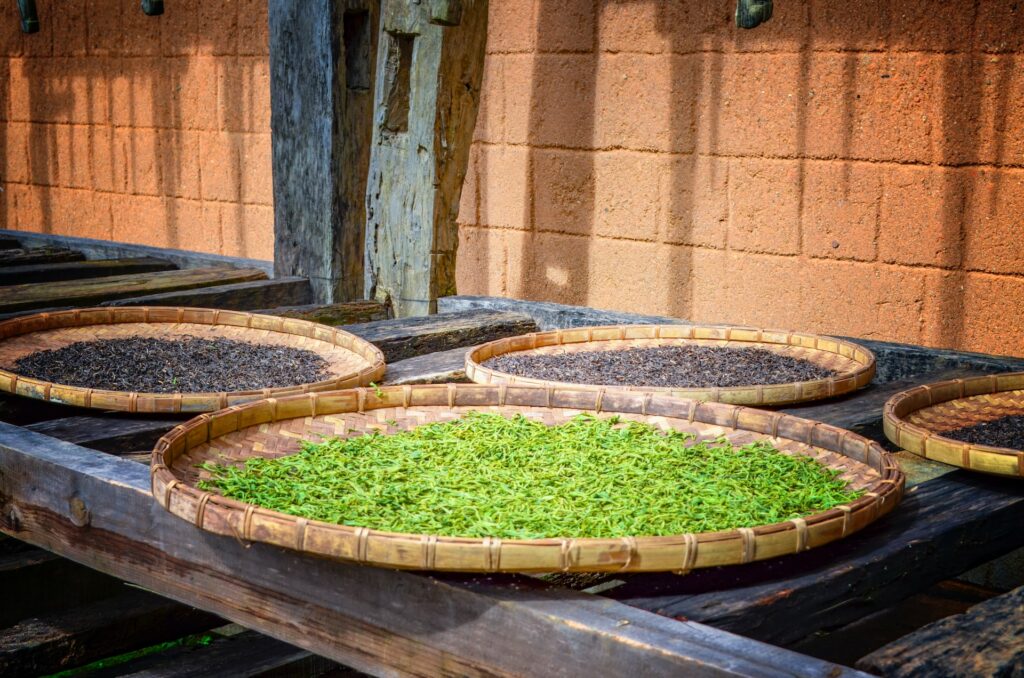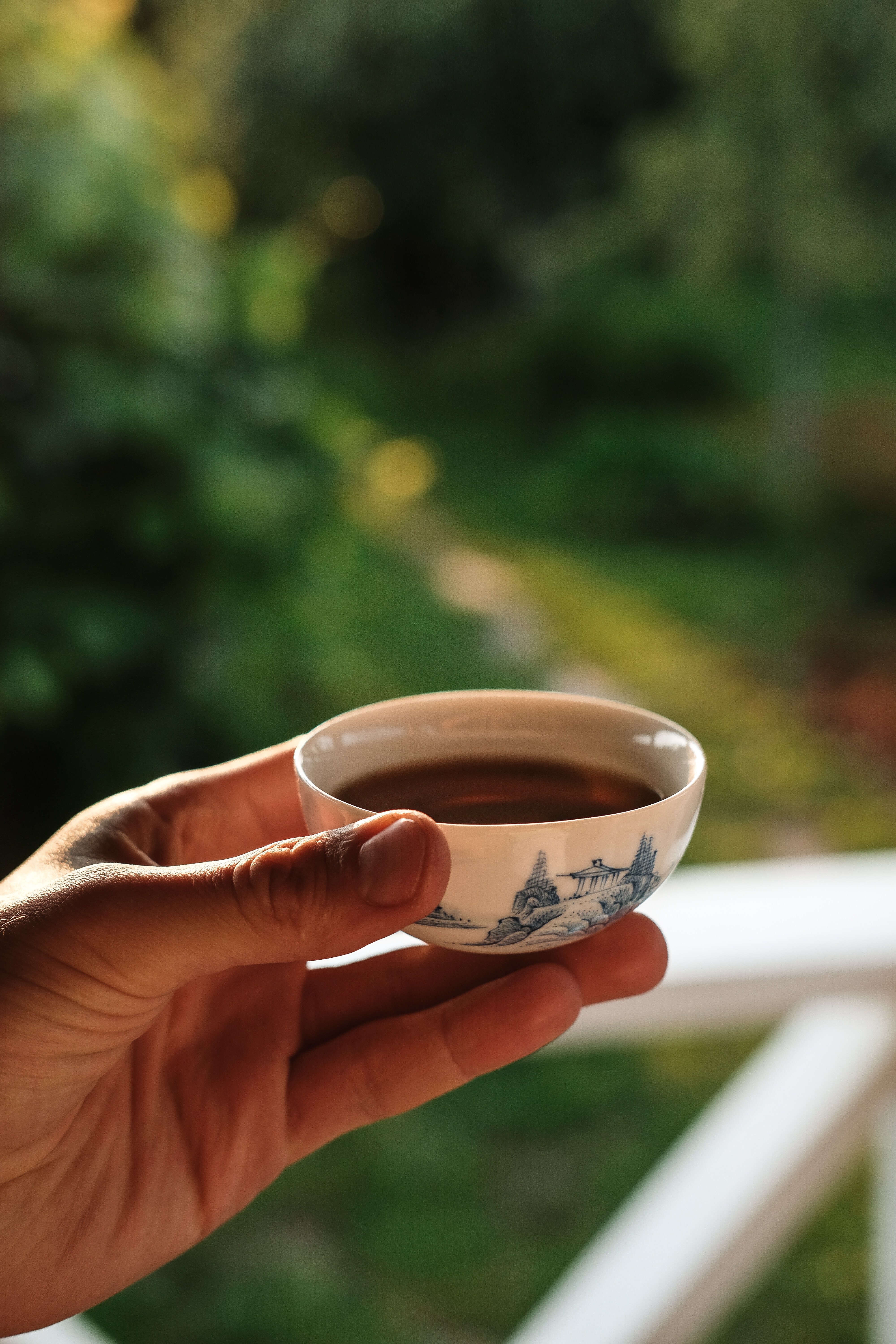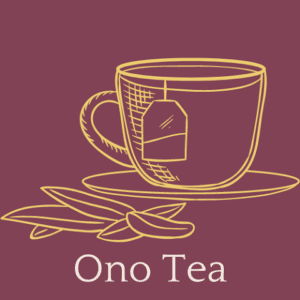Are you an avid tea drinker? Look no further than oolong tea, bursting with flavor from fruity to nutty and brewed according to classic Asian practices. With so much to offer, oolong tea is both a treat and a treasure.
From reducing the risk of heart disease to helping with weight loss, you’ll reap numerous benefits from oolong tea. Not only that, but you’ll be transported back in time to its ancient roots while savoring its unique flavors and aromas.
So what are you waiting for? Dive into a delicious cup of oolong tea today!
Check out this wide-ranging guide to master the art of tasting tea, uncover which oolongs are best for rookies, how to drink oolong tea and much more! Get in the know and get started!
Oolong Tea
Oolong tea is made from the leaves of the Camellia sinensis plant. To get the best flavor, those leaves must be picked at just the right time and handled with love and care. With a taste that can range from sweet to lightly toasted, oolong tea offers a unique experience with every sip!
Who wouldn’t want to savor a cup of this amazing brew? It has six whole categories of tea! From black to oolong, green or white, puerh, and then yellow. Each variety is unique thanks to the way it’s processed, be it rolled leaves, withered a certain way, or oxidized differently. That’s what makes them so special!
Clearly, more processing goes into making a cup of dark stuff than its semi-oxidized counterpart. But don’t be fooled! Although greener than black tea, oolong has been put through its paces, too!
Oolong Tea Varieties
From its pale yellow to dark brown and orange hues, the varying degrees of oxidation that create oolong tea’s complex flavor make it unique. Tastes and aromas can range from fruity, nutty, and vegetal to flowery.
The Chinese Da Hong Pao is a highly oxidized variety known for its earthy tones, while Taiwanese Tung Tin teas are smooth and nutty, and Bai Ho represents the fruitier end of the spectrum.
Some of the oldest tea trees on earth are grown in Wuyi, making this premier variety noticeably more expensive, but newer, much more affordable options from the same area have emerged without compromising quality!
Brewing the perfect cup of oolong tea can be tricky; it all depends on the oxidation level and leaf shape. But don’t fret! Just use these guidelines as your starting point and modify as needed—you’ll sure be sipping a delectable cup in no time!

Brewing the Perfect Cup of Oolong Tea
Step 1: Choose a Teapot
Let us start with choosing the teapot to brew your tea. This step is important if you want to make the ultimate cup of tea. Not only do you need the perfect brewing companion you also want it to be aesthetically pleasing and fit into your home
Brewing up some oolong tea? You’ve got two options: the complex and traditional Chinese style or the simpler Western way. Both brews make for a delicious drink but come with their own distinct benefits. If you’re a fan of drinking tea and appreciate the extra flavor, go for the tried-and-true Chinese technique. But if you’re new to tea, want to whip up one cup quickly, or just need your daily caffeine fix, try out the Western approach!
- Asian Brewing
Have you heard of Yixing Teapots and Gaiwans? If not, we’ve got you covered, and we will tell you all about them!
In traditional Chinese homes, they’re used to brew oolong tea—but don’t be fooled by their size. Even though the tea leaves only sit in the water for right around a few minutes, multiple cups can still be crafted since the brewing process is done over and again. Plus, bamboo trays with slotted sides were made to accompany these tools and provide an easy way to serve food directly from the pot or Gaiwan. Astounding stuff!
Keep a firm hold using your left hand – remember you are dealing with hot water, so steady does it – while stirring the leaves in rhythmic circles with your right. We must mention that this process is as cathartic as it is an artful endeavor you can perfect in no time!
- Western-Style Brewing
You can make it in the Western way using any old teapot. This method is great if you’re short on time, but it won’t give you that same culturally-rich experience that making it and drinking it the Chinese way provides.
We would suggest going with the Asian way of making oolong tea. But really, no matter what approach you choose, you won’t go wrong. For a delicious cup of oolong tea, just remember to be mindful of the right amounts of tea leaves, water temperature, and brewing time. Easy peasy!
Step 2: Prepare Tea Leaves
Are you looking for an exceptional oolong-tea taste? Brew from loose-leaf tea – that’s the best way to go! Although, if convenience is what you’re after, a green oolong tea bag works just fine.
Now let’s get the perfect ratios and measurements!
Brewing the perfect cup of oolong tea is a science. To ensure supreme sipping, you’ll need to use just the right quantity.
- Six ounces (0.17 kg) of water requires one teaspoon of balled leaves or two tablespoons of loose-leaf oolong – which translates to 2 grams per 6 to 8 ounces (.17 – .23 kg).
There you have it: your recipe for a stellar cup!
Step Three: Prepare Water
The highest quality water is the key to delicious-tasting teas and tantalizing smells. Distilled water won’t cut it – its lack of minerals will leave your tea with a flat taste.
Also, chemical treatments, including chlorine, can have an adverse effect on tap water’s flavor, so they should be avoided too. But don’t worry – filtered or spring water will give you the exceptional results you seek!
To get the best cup of this complex flavor, use almost-boiling water that’s around 180 to 200 degrees Fahrenheit. Now if you don’t have a thermometer handy to hit that sweet spot – no sweat! Just wait a minute after boiling it for it to cool down, and then pour it into your teapot or preferred brewing vessel. Yum!
Half-fill your Gaiwan or Yixing cup; give it a swirl, and then pour out the liquid. Here’s why you do this: The first addition of water is to clean off those tea leaves and wake up their flavourful glory. Once that’s done, top up your teapot with the perfectly brewed contents. Now sit back and enjoy!

Step Four: Steep
For the perfect flavor and robustness, steep it for 1 to 5 minutes. To ensure you get the best-tasting cup of tea possible, start by allowing the leaves to steep for a minute – giving it a quick taste test after 30 seconds – then serve it up in mugs for ultimate satisfaction. Trust me; you won’t regret it!
Fancy iced oolong tea? Just brew it as you would for hot, let it cool off to perfection, and you’re good to go! But don’t try using cold water–that doesn’t bring out that full oolong flavor you know and love.
How to Prepare Oolong Tea: Other Techniques to Keep In Mind!
- Experience a delicious, classic Chinese tea with Oolong tea. This tea sits perfectly in-between green and black tea in terms of its oxidation level, giving you the perfect balance of flavor! Every sip is sure to tantalize your taste buds and stimulate your senses. Enjoy this delightful cup with friends or as a relaxing respite at home – it’s the ideal way to unwind!
- One level teaspoon of dried tea leaves per person or cup is the usual measure. If you want to jazz it up a bit, feel free to experiment with more – but be warned, too much could result in a cup of bitterness! Still, a dash of spontaneity never hurt anyone – so go ahead and stir things up!
- For the best-tasting dark oolong teas, do not brew for too long. If heated too long, you’ll sacrifice a top-notch flavor and end up with a horrible-tasting cup of tea. To make green oolong tea, boil water for two minutes and then let it cool to 85 degrees for brewing perfection!
- Brewing green oolong tea for 2-3 minutes is the way to go, but if you’re opting for dark oolong, you’ll need a few more minutes of infusion – 3-5, to be exact. Don’t dilly-dally, though, or your cuppa might turn out bitter!
- Before you indulge in your delicious cup of tea, be sure to take out the tea infuser and toss the used tea leaves. Voila! Now, enjoy it while it’s hot!
- Did you know you can reuse oolong tea leaves for a second infusion that’s just as tasty? Just add a little more water and steep your cup for an extra minute. Apparently, many people believe the second brew has the best flavor of all – go figure!
- Sometimes, instead of milk and sugar, oolong tea is sweetened with a bit of honey – the perfect addition to a delightful cup! Adding this natural syrup can create an unbelievably tasty combination.
Crafting Unique Tastes
When you steep oolong tea, an entire world of flavor opens up to you! Your first sips of tightly rolled oolongs will be gentle and subtle, while open-leaf ones hit your taste buds with a more robust flavor from the get-go.
But wait – that’s not all! While some teas provide consistent notes in every cup, other remarkable oolongs even offer different depths of flavor as your steeping continues – how intriguing! So sit back, relax, and enjoy this delicious journey through a cup of tea.
Things to Consider
Brewing oolongs in a small pot is the most interesting and informative way to get up close and personal. As the leaves turn, swell, and unfurl, and the liquid gets darker and then lightens again, with its flavor developing from mild to robust – you can observe this all unfold in real-time. It’s an exquisite experience!
Sadly, there’s no tried-and-true way to tell exactly when your oolong tea is ready for sipping.
Yet, once the taste starts to wane, you’ll know that all the delightful flavor has been successfully stepped out! This requires a bit of taste testing, though.
FAQS
1. What does oolong tea taste Like?
Oolong teas have got an impressive range! From sweet, honey-like notes to floral and fruity flavors – they all vary in taste. Just like green tea, it’s clear to see that not all oolongs are the same!
2. Can I sweeten it up with sugar and milk?
How you drink oolong tea is all about your palette and preference. However – it’s one of those teas that you’d usually drink solo.
We would recommend avoiding drinking oolong tea with sweeteners since it is sweet in nature!
3. Is there a difference between loose tea, tea sachets, and tea bags?
It can be hard to choose which form of oolong tea is best for you! Because at the end of the day, it is all oolong tea, right? Well, yes and no. If you have a keen palette, you will notice the difference depending on how the tea is made. Think warm and cozy aromas with none of the guesswork – that’s why many people like to opt for the convenience of oolong tea bags.
Others prefer loose-leaf; it offers more control over flavor, aroma, and strength so that they can have a personalized cuppa every time. And then there are sachets – perfectly portioned herbal infusions ready in seconds. It all depends on what you prefer or if you even care.
While learning about tea, my advice is to go with the higher-grade loose tea – no sachets or bags. Sugar and milk should be left out if you’re just drinking it on its own; tea leaves are always superior for this purpose! So don’t bother with those pesky pre-packed tea bags if you plan on having it solo.
Conclusion
Oolong tea is undeniably becoming the cup of choice for more and more people – could it be because of its exquisite varieties, each boasting its own delectable taste? It’s no wonder why oolong is loved by many; embedded within every sip are centuries-old customs that have been faithfully preserved through generations. Whether you’re a fan of light or dark, there’s always something special waiting for the Taiwanese and Chinese oolongs!

